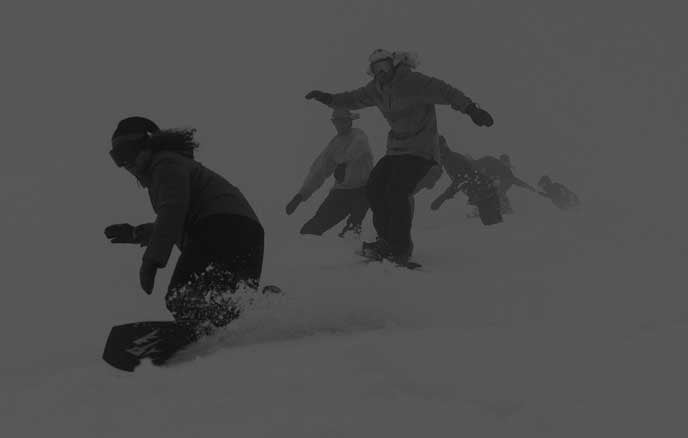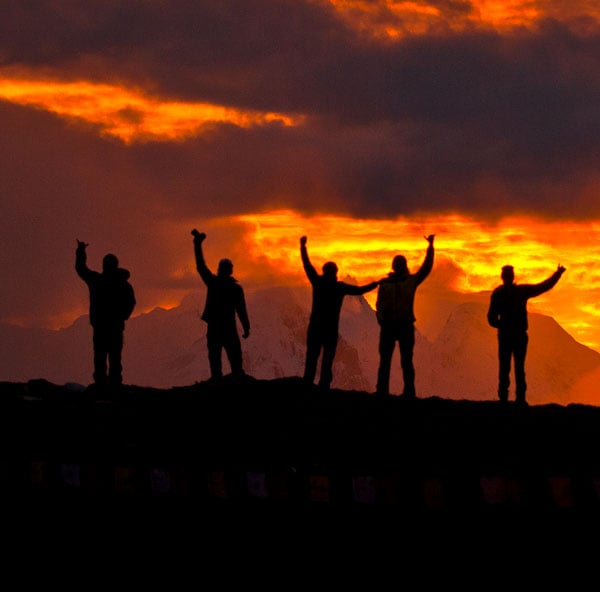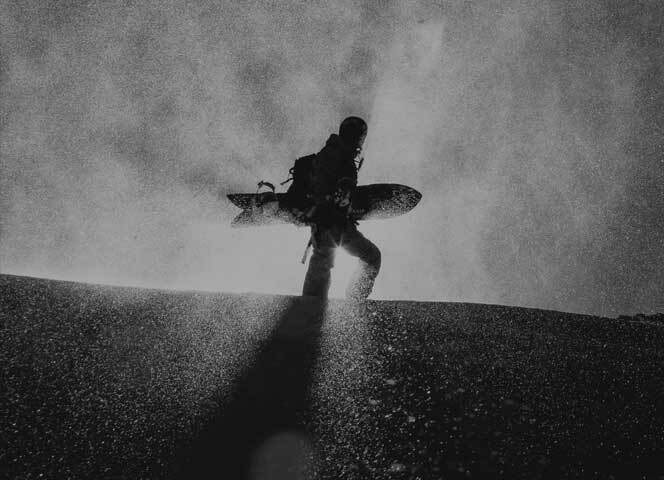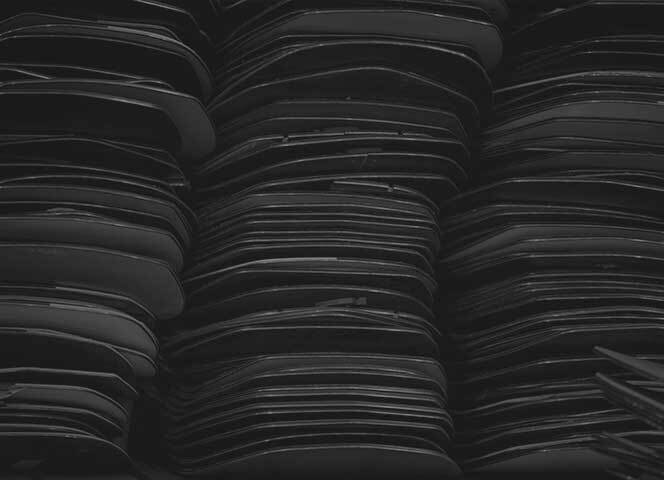Outerwear 101
How to understand outerwear fabric performance ratings
Finding the perfect outerwear for your mountain adventures doesn’t have to be a guessing game. The first step in choosing outerwear that best matches your needs is to learn how to compare the performance ratings of the fabric and materials a specific jacket or pants is built with. Once you understand how waterproof, breathable and windproof you can expect the materials to be, you can decide if that’s the best outerwear for your intended usage.
To gain this perspective, we’ve got answers to all your questions regarding outerwear waterproofing, breathability, windproofing, fabric thickness, and more.
Jump to:
- What's the different between 2-layer, 2.5-layer and 3-layer fabrics?
- How do you compare outerwear waterproof ratings?
- What is Durable Water Repellent Treatment (DWR)?
- How do you compare outerwear breathability ratings?
- How do you compare outerwear windproof ratings?
- How does fabric thickness affect outerwear weight and durability?
- How do you choose between down and synthetic insulation?
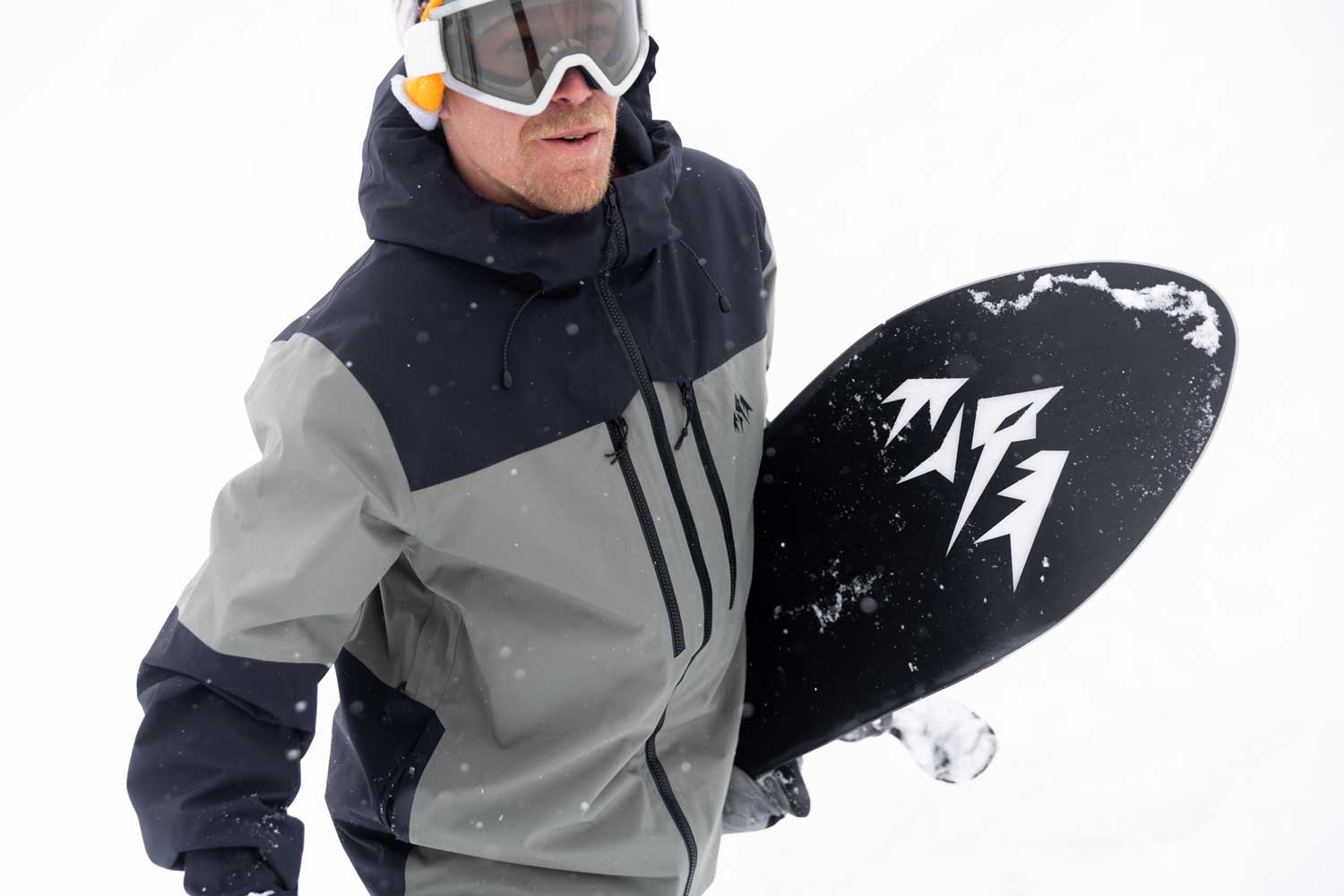
What’s the difference between 2-layer, 2.5-layer, and 3-Layer fabrics?
Technical outerwear that’s designed to be waterproof will be made with either 2-layer, 2.5-layer or 3-layer fabric. The amount of layers refers to how many different materials are bonded together to make the final fabric.
2-layer fabrics consist of a DWR treated face fabric bonded to a waterproof membrane. 2-layer outerwear is always lined with a thin fabric that keeps the membrane from direct contact with your skin or base layers. The lining is critical because it keeps the waterproof membrane from getting damaged and becoming less waterproof.
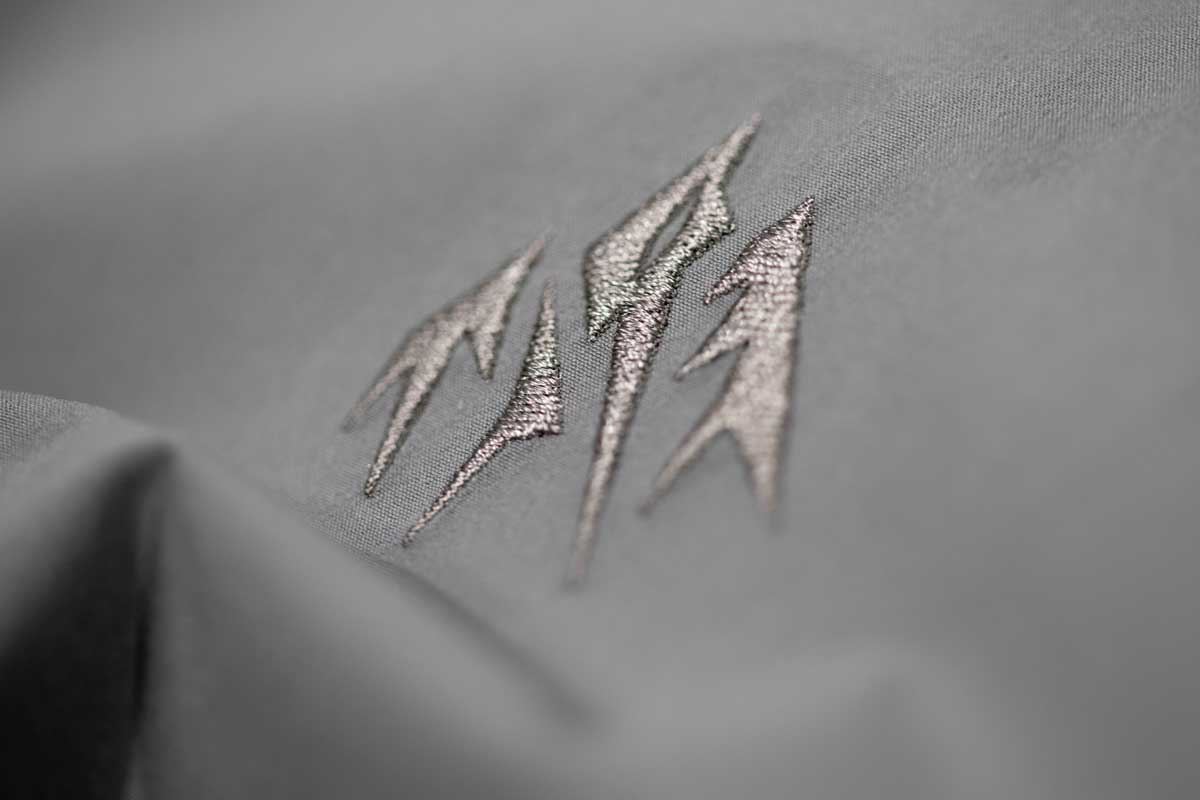
2.5-layer fabrics also consist of a DWR treated face fabric bonded to a waterproof membrane, but instead of a thin fabric lining protecting the laminate, there is a printed liner protecting the membrane. The printed liner is usually a raised pattern that keeps your base layers from touching the membrane. Eliminating the lining fabric cuts weight.
3-layer fabrics consist of a DWR treated face fabric bonded to a waterproof membrane and a liner material. 3-layer fabrics do not require a lining material because the material protecting the membrane has already been bonded to it making it the most durable construction. Eliminating the need for the lining fabric allows 3-layer outerwear to be lighter weight and more durable.
All men's and women's Shralpinist outerwear plus the Men’s Peak Bagger jacket are made with three layer fabrics, and all men's and women's MTN Surf outerwear, is made with two layer fabrics.
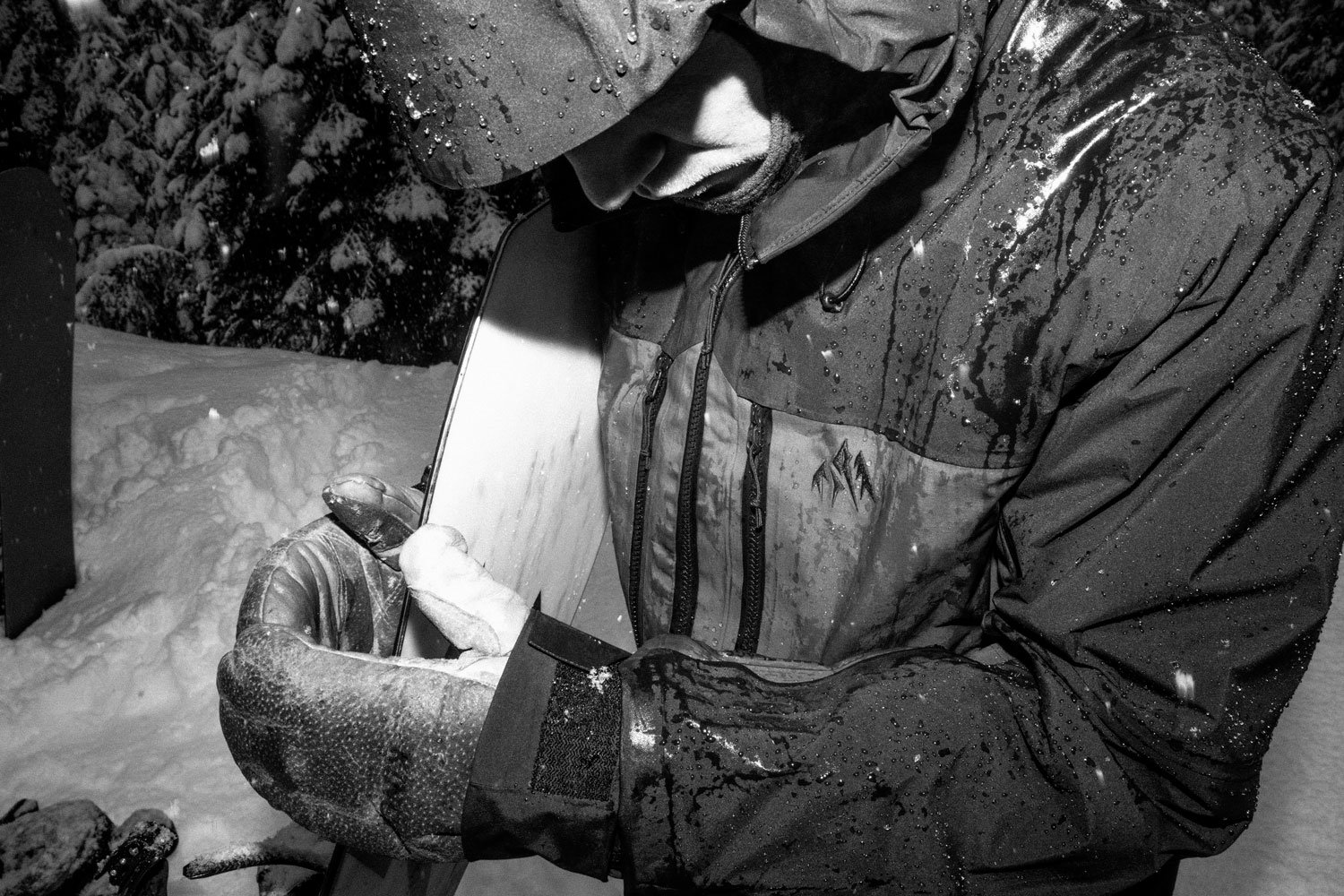
How do you compare outerwear waterproof ratings?
When comparing outerwear one of the most significant performance differences is how waterproof a garment is. The level of waterproofing primarily depends on the fabric the outerwear is made with. All waterproof fabrics have one thing in common - a thin membrane layer that is bonded to the face fabric. The type of membrane and how it is bonded to the face fabric determine how waterproof the fabric is.
The membrane acts like a one-way street. It has microscopic pores that allows your body heat and perspiration to exit the garment in the form of water vapor, but the pores are too small to allow liquid water to pass through from the outside in. By only allowing water vapor to move in one direction the membrane is breathable and waterproof.
Fabrics are rated for waterproofness using an industry standard scale that measures how much water pressure a fabric can withstand before water seeps through the fabric and gets you wet. The waterproof ratings refer to the results of a water column test that’s used to judge a fabric’s water resistance. In the test, a small piece of fabric is pressurized with the equivalent of a water column. The rating of a given fabric is determined by how high the theoretical column can be filled before the water pressure is too much for the fabric to withstand. The higher the water column a fabric can hold off, the more waterproof the fabric is.
Water resistant and waterproof fabrics are usually rated from 2,000 mm to 30,000 mm, also abbreviated to 30K. The performance difference between a 2K water resistant fabric and a 30K waterproof fabric is substantial.
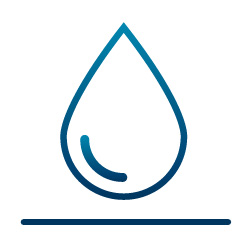
2,000 mm
2K fabrics are only slightly water resistant. They will keep you dry for a short time in light rain or snow.
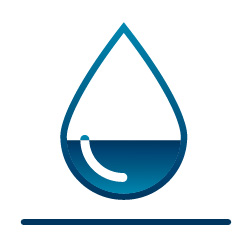
10,000 mm
10K fabrics are moderately waterproof and will keep you dry in a light rain or average snow when standing still.
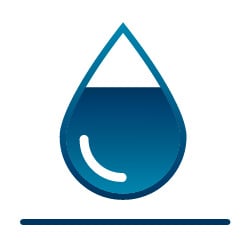
20,000 mm
20K fabrics are very waterproof and will keep you dry when moving through moderate rain or snow.
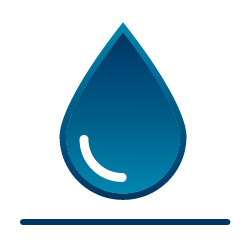
30,000 mm
30K fabrics are extremely waterproof and will keep you dry when moving through strong rain or heavy snow.
After decades of field testing outerwear, we consider anything above 20K truly waterproof. All Jones outerwear that contains a waterproof membrane is rated 20K waterproof or higher. The men's and women's MTN Surf outerwear and the Men’s Peak Bagger jacket are rated 20K waterproof, while the men's and women's Shralpinist outerwear are rated 30K waterproof for even greater storm protection.
Our Shralpinist Recycled GORE-TEX Outerwear is made with GORE-TEX PRO fabric that is widely known as one of the most waterproof fabrics available. GORE-TEX does not release waterproof ratings for their fabrics, but based on their standard setting performance, it’s a given that GORE-TEX PRO is 30K waterproof or higher.
One critical thing to note regarding all waterproof fabrics is that even with 30K rated garments, the exterior face fabric can get saturated with water if exposed to wet conditions for an extended period of time. However, the moisture should not penetrate through the waterproof membrane and get your base layers wet. If your face fabric easily “wets out” it is because the durable water repellent treatment (DWR) has deteriorated or been contaminated with dirt or body oils. DWR helps shed water off the fabric and can be reactivated by both washing and drying your outerwear frequently. Learn more about cleaning your outerwear here.
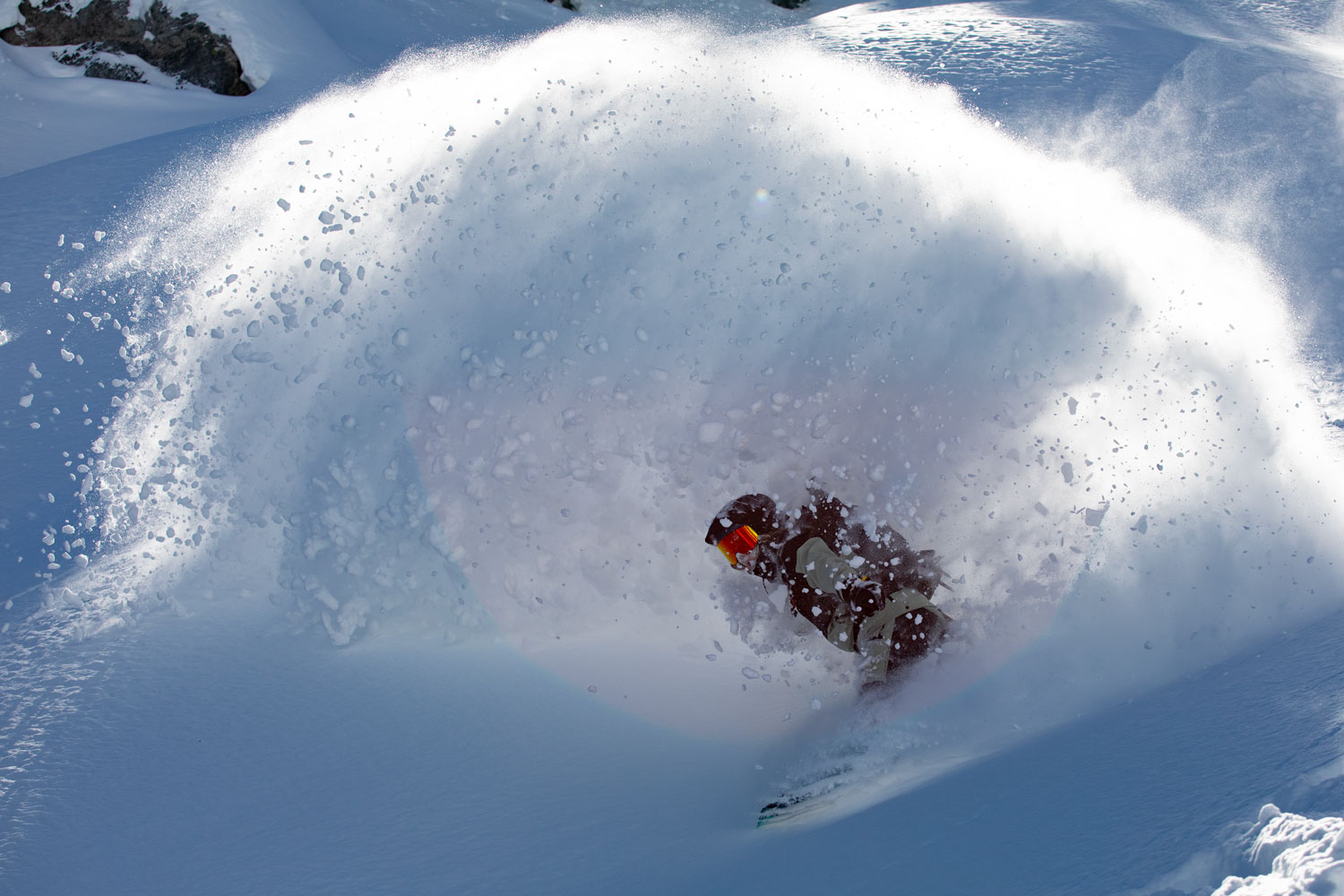
What is Durable Water Repellent Treatment?
Most technical outerwear is finished with a durable water repellent (DWR) treatment that helps improve the water repellency of the outerwear. The DWR treatment increases the surface tension on the face of the fabric which causes the water droplets to bead up and roll off the surface of the fabric.
A DWR treatment works in tandem with the fabric membrane to keep you dry. The DWR sheds water off the surface of the fabric and the membrane keeps water from absorbing into the fabric. Your outerwear can get saturated on a storm day if the DWR treatment has worn off or the fabric is dirty and contaminated with body oils
To keep your outerwear waterproof it’s important to wash and dry regularly after frequent use and reapply a wash-in DWR treatment. Learn more about how to wash your outerwear and reapply a DWR treatment here.
Learn how to properly wash your waterproof or down outerwear
Traditionally, most DWR treatments have been made with perfluorinated compounds (PFCs) that are man-made chemicals designed specifically to be good at repelling water. The first PFCs used by the outdoor industry were long chain C8 fluorocarbons that worked really well for waterproofing, but they were found to be highly persistent ‘forever chemicals’ that would not break down over time in the environment.
Some technical fabrics now use PFC-Free DWR treatments that work in the same way, but they are not as persistent and will break down when released from the outerwear and into the environment. The one exception to this is the DWR treatment used by GORE-TEX on their PRO shell material. GORE-TEX uses a short chain C6 PFC DWR treatment that is an environmental improvement over the C8 PFC treatment. They break down quicker than C8 PFCs, but Short Chain PFCs can still accumulate in the environment.
All Jones outerwear except for Jones Shralpinist Recycled GORE-TEX PRO outerwear is treated with PFC-Free DWR. At this time GORE-TEX does not offer GORE TEX PRO fabrics with PFC-Free treatment. When GORE TEX switches to PFC-Free DWR on PRO in 2025 we will use it.
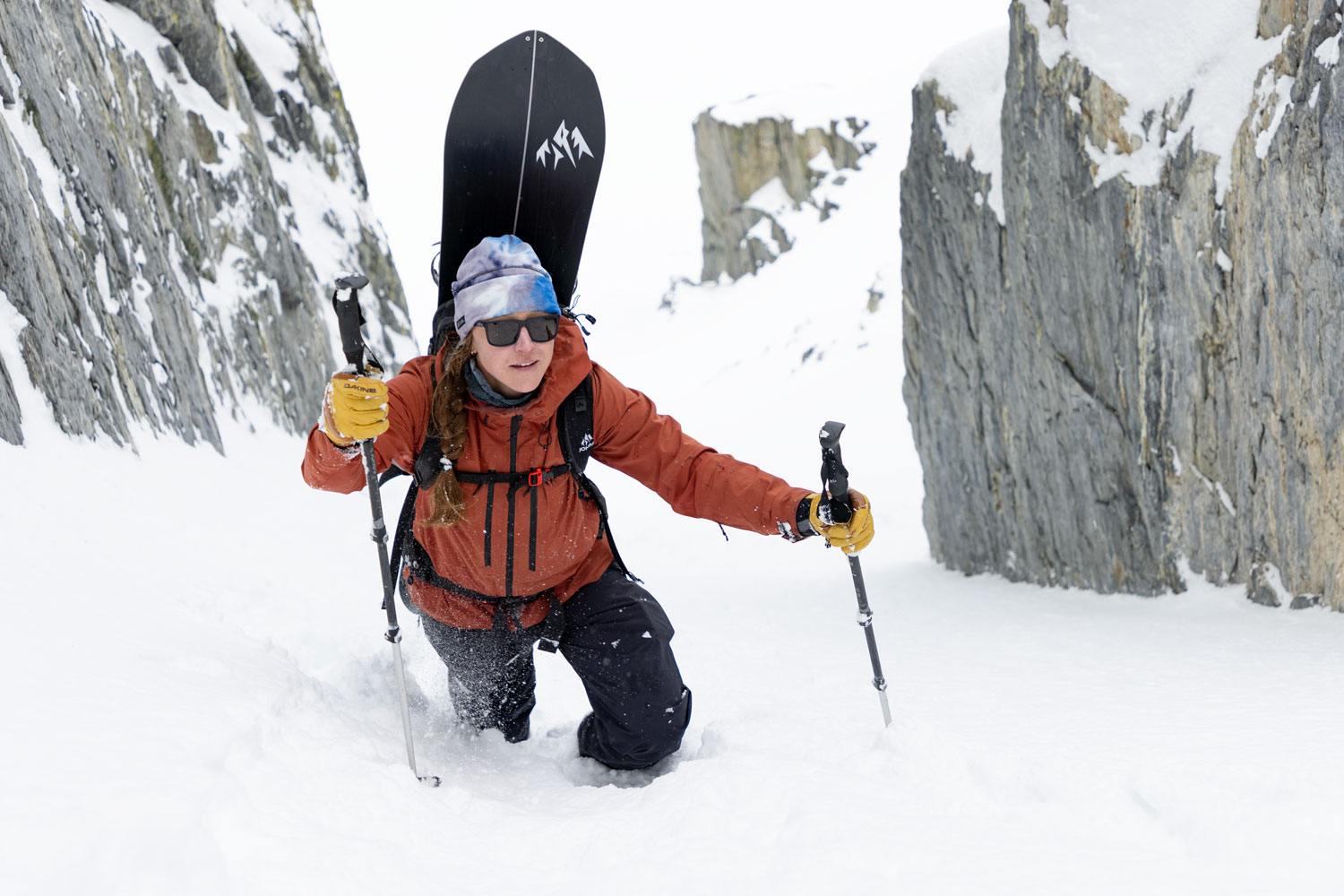
How do you compare outerwear breathability ratings?
The second critical performance rating to note when comparing outerwear is breathability. As important as it is for your outerwear to keep moisture from coming in, it’s equally important for your outerwear to be able to let water vapor out. Fabrics with high breathability ratings allow your perspiration to escape so you don’t get sweaty in highly aerobic situations.
Breathability is rated with a seemingly similar rating scale as waterproofing, but the ratings refer to a different test and unit of measurement. There are several tests to measure breathability, but the test that Jones uses measures how much water vapor in grams can pass through a square meter of the fabric in a 24-hour period. Also called the inverted cup method, it is a good predictor for how most technical fabrics will perform in the field. Technical fabrics are rated from about 5K to 30K breathable. More “open” membranes that easily allow water vapor to pass through score higher breathability ratings.

5,000 g/m²/24hr (5K)
Fabrics are slightly breathable, but you’ll quickly get clammy if active.

10,000 g/m²/24hr (10K)
Fabrics are breathable enough for light activity.

20,000 g/m²/24hr (20K)
Fabrics are breathable enough for moderate activity.

30,000 g/m²/24hr (30K)
Fabrics are breathable enough for high output activity. You may still get hot, but you won’t get too sticky from sweat.
We have found that it’s critical that your outerwear is rated at least 20K breathability if you would like to use the outerwear touring in the backcountry. Anything less and you are likely to get clammy when wearing it on the move.
The most breathable jacket in the Jones line is the Men’s Peak Bagger jacket which boasts an impressive 40K breathability rating. The Peak Bagger is designed to be a shell you can wear while touring without getting clammy.
The men's and women's Shralpinist outerwear features a 30K breathability rating and also does an awesome job at keeping you dry when on the move.
The men's and women's MTN Surf outerwear features a 20K breathability rating and adequately dumps heat in all but the most active situations.
When you see a fabric advertised as 30K/30K this usually means that the fabric offers 30K waterproofing and 30K (g/m²/24hr) breathability.
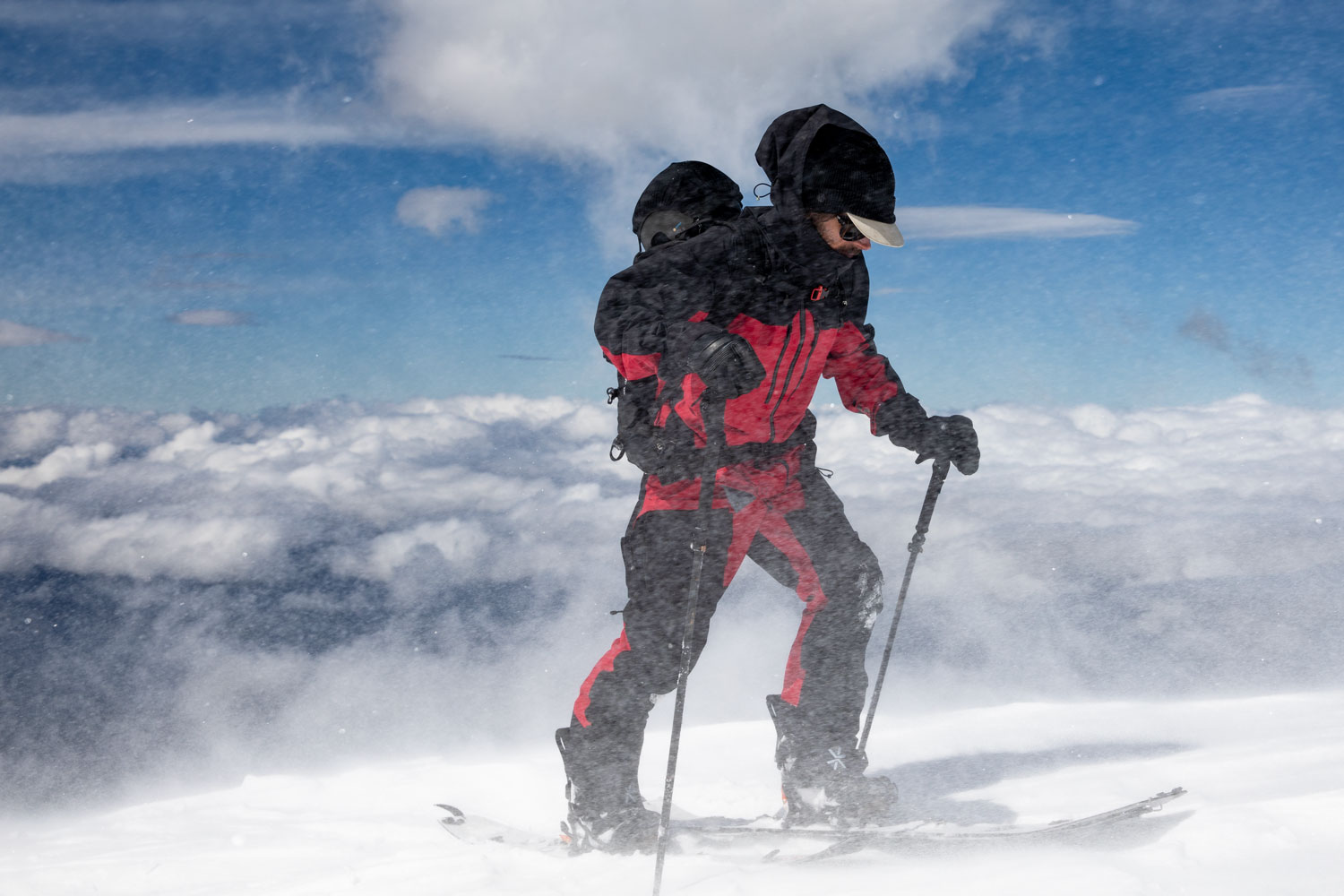
How do you compare outerwear windproof ratings?
To stay comfortable on a cold, windy day in the mountains your outerwear needs to be adequately wind resistant. All outerwear that is made with a waterproof membrane will be completely windproof.
The wind resistance of outerwear without a waterproof membrane is measured by testing the amount of cubic feet per minute (CFM) of a 30-mile-per-hour wind that can pass through one square foot of a material. Lower CFM ratings are more wind resistant than higher CFM ratings. Technical fabrics are rated from 0 to 100+ CFM.

100 CFM
Not windproof at all. Wind will whistle right through this fabric.

50 CFM
Very little wind resistance. You will feel the wind and lose heat through this fabric.

20 CFM
Slightly wind resistant. You won’t feel a light breeze, but you’ll feel a steady wind.

10 to 5 CFM
Notable wind resistance. You won’t feel the wind, but some is passing through.

0 CFM
Completely windproof. You won’t feel any wind through the fabric.
All Jones outerwear except for the High Sierra pants are completely windproof and has a windproof rating of 0 CFM. The High Sierra pants are made with a double weave, soft shell material that is designed for maximum breathability and durability and has a rating of about 5 CFM. This fabric blocks wind so well that you won’t likely feel it, but it is not completely windproof and still breathes better than a fabric with a membrane.
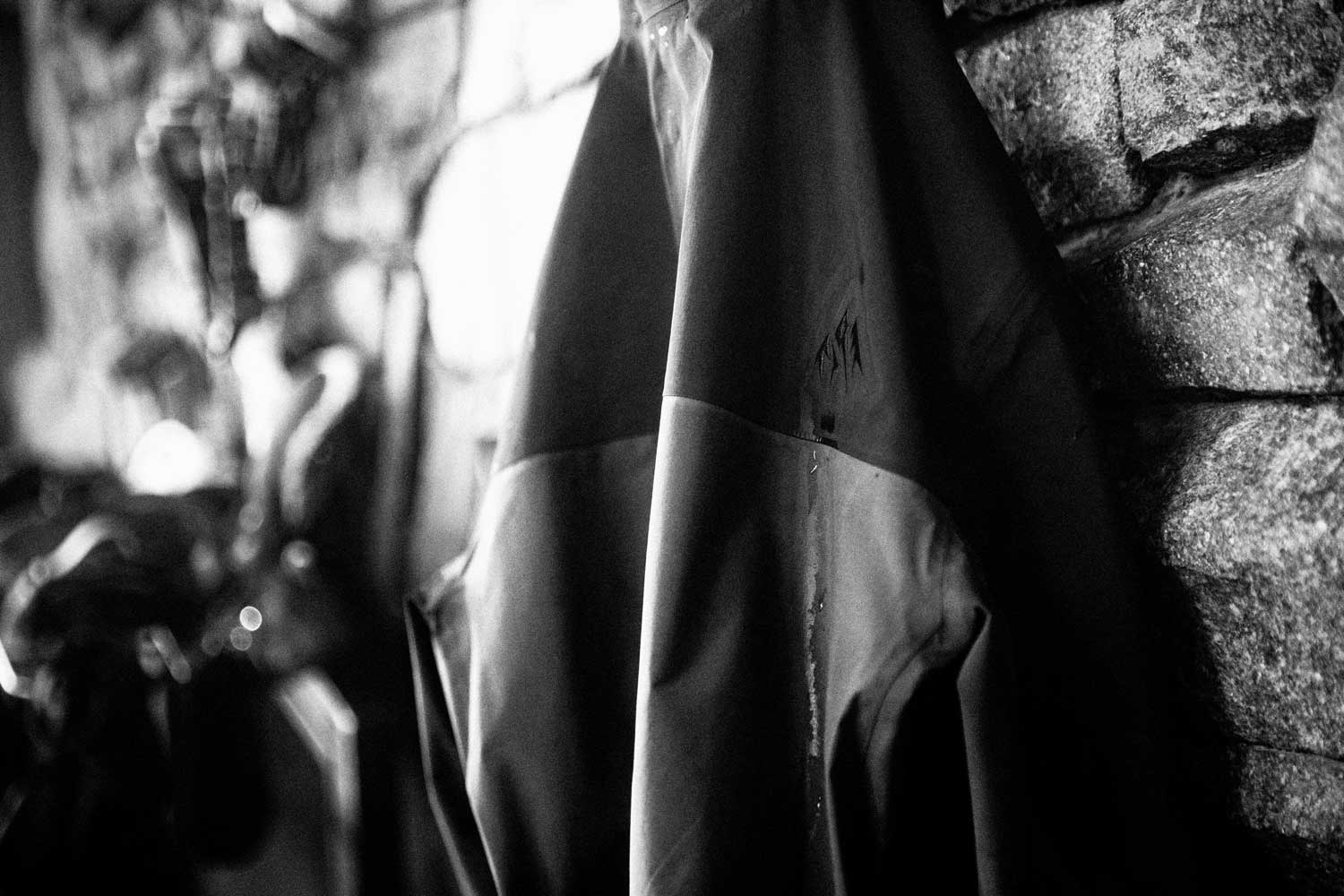
How does fabric thickness affect outerwear weight and durability?
Fabric is made up of millions of individual fibers. The thickness of each of these fibers plays an important role in fabric feel and durability.
Denier is the unit of measurement used to determine the thickness of the fibers in a given fabric. Fabrics with a high denier count tend to be heavier and more durable. Fabrics with a low denier count tend to be softer, more packable and lighter weight.
To maximize the benefits of both lightweight, lower denier fabric and durable, higher denier fabrics, we offer two outerwear lines with body mapped fabric layouts with the ideal fabric in the right place.
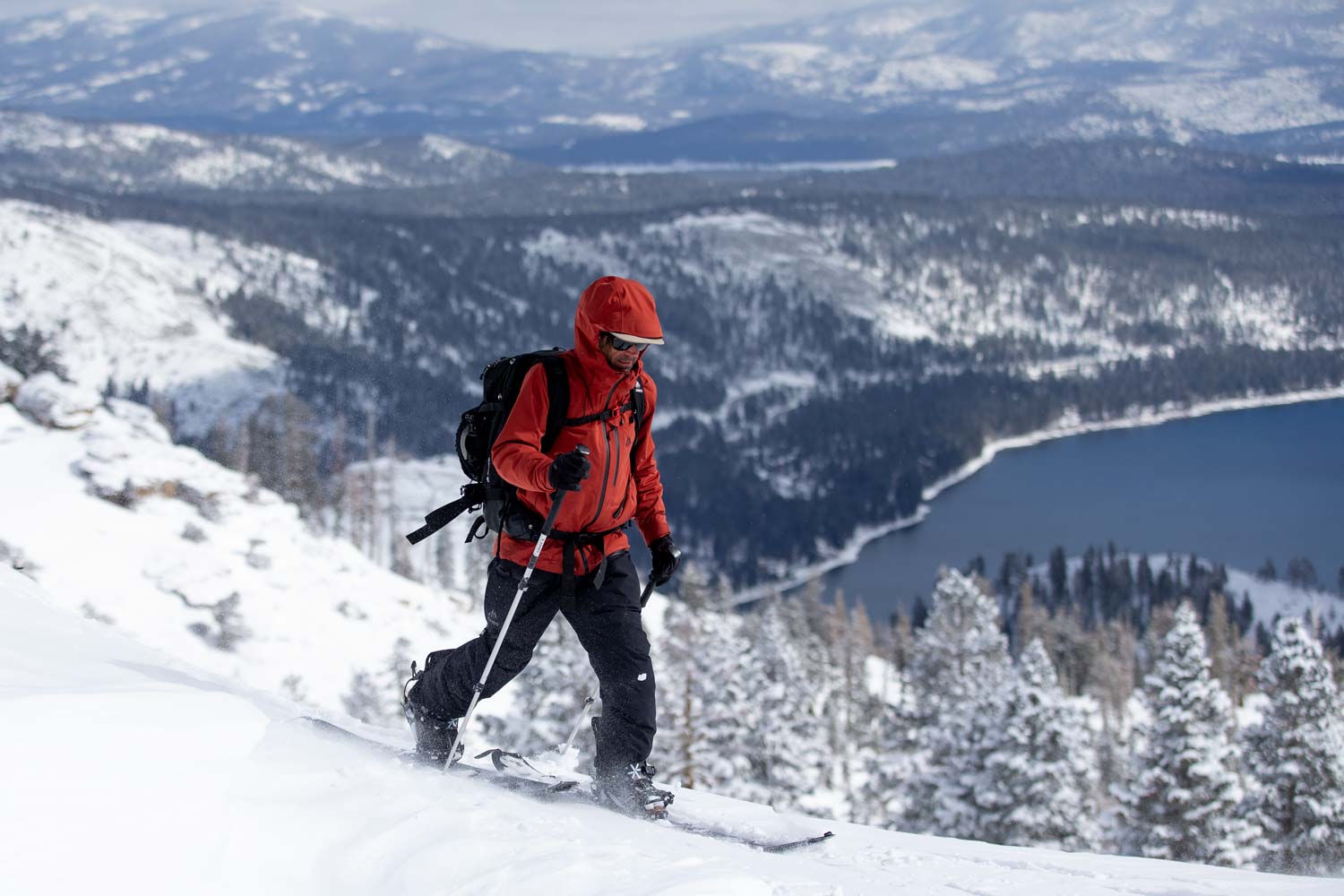
OurMen’s Shralpinist Recycled GORE-TEX PRO outerwear is constructed with a more durable 70D fabric with a higher denier count in the high wear areas, and a lighter weight 40D fabric with a lower denier count in the areas where you flex. The result is high performance outerwear that’s as light and packable as possible, without sacrificing durability.
The men's and women's MTN Surf outerwear is made with a similarly body mapped combination of two 75D fabrics, and the men's and women's Shralpinist Stretch outerwear is made with a 40D face fabric bonded to a 20D polyester backer fabric.
The men's and women's Jones Re-Up puffy’s are made with our lightest material, a 20D 100% recycled Nylon that does not allow down feathers to migrate through the fabric. This material keeps this layering piece extremely light and packable.
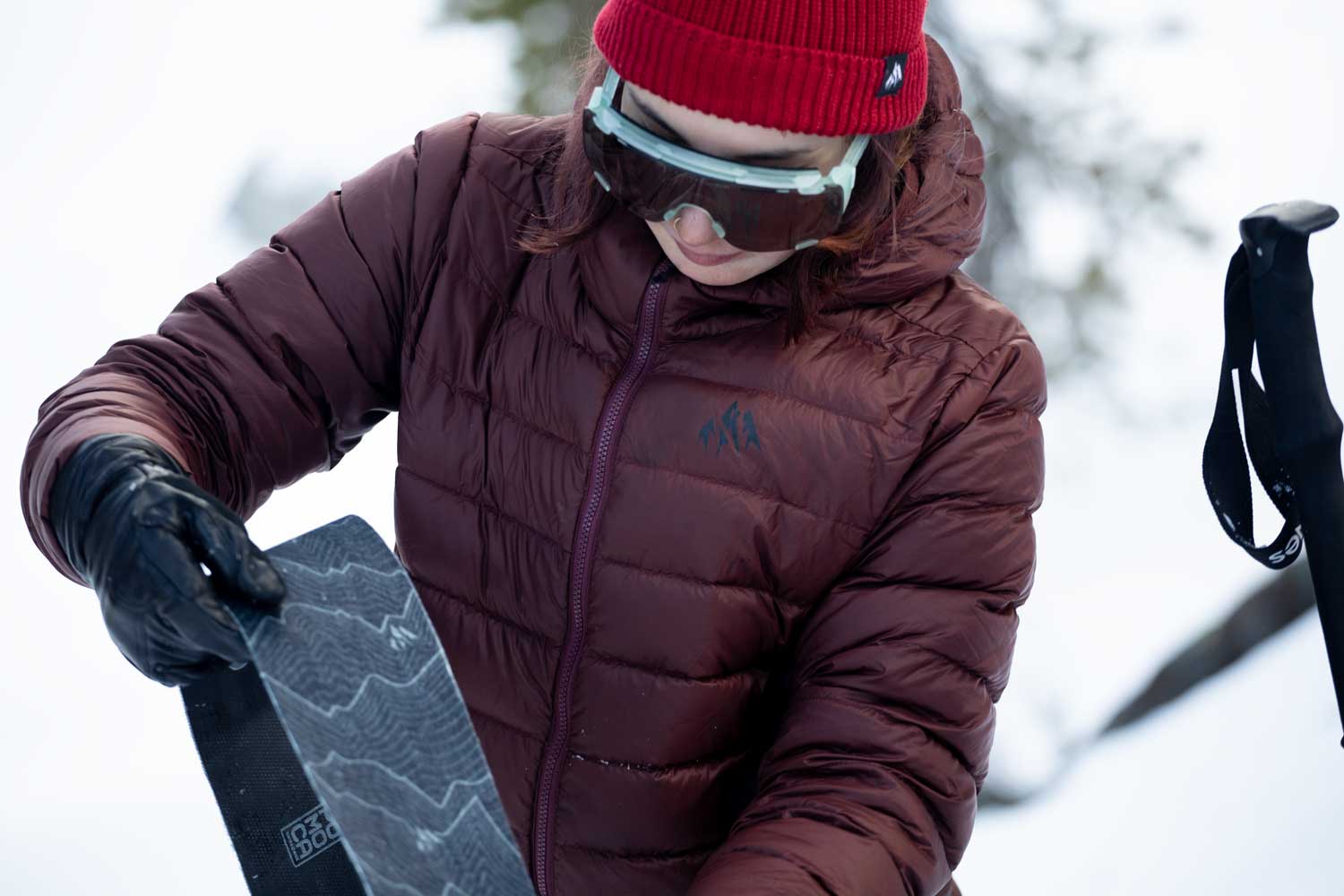
How do you choose between down and synthetic insulation?
The best insulation layer to throw in your pack when you leave the trailhead depends on the day and the destination. Understanding what weather and touring conditions down vs synthetic insulation excels in is the key to choosing the best insulation layer for your next adventure.
Down insulation layers are best used in cold, dry conditions. Down loses its insulative properties when it gets wet, and it’s not that quick to dry out once it’s saturated, so down is not the ideal insulation to bring on soggy, wet days in the mountains or when moving fast and sweating a lot. On cold but humid days, synthetic fill or fleece insulation are usually the better options.
Synthetic insulation retains warmth even when wet, so it's great insulation for humid winter climates. The tradeoff is that synthetic insulation does not offer the same warmth-to-weight ratio as down insulation.
The men's and women's Re-Up Down Recycled Jackets are made with 100% recycled 750-fill down insulation and are ideal layers for staying warm before you start moving or at camp. The men’s and women’s MTN Surf jackets are lined with Primaloft synthetic insulation and are the perfect jackets for cold, damp days at the resort.
Fill power is a number that measures the quality of the down and its ability to insulate. Higher fill power means the down can trap more air which allows for greater insulation. Fill power is determined by measuring the amount of space one ounce of down will occupy in cubic inches.
The Re-Up is also the only puffy in the world made with 100% recycled 750-fill down. Learn more about what makes the Re-Up so unique in this feature story about recycled down.
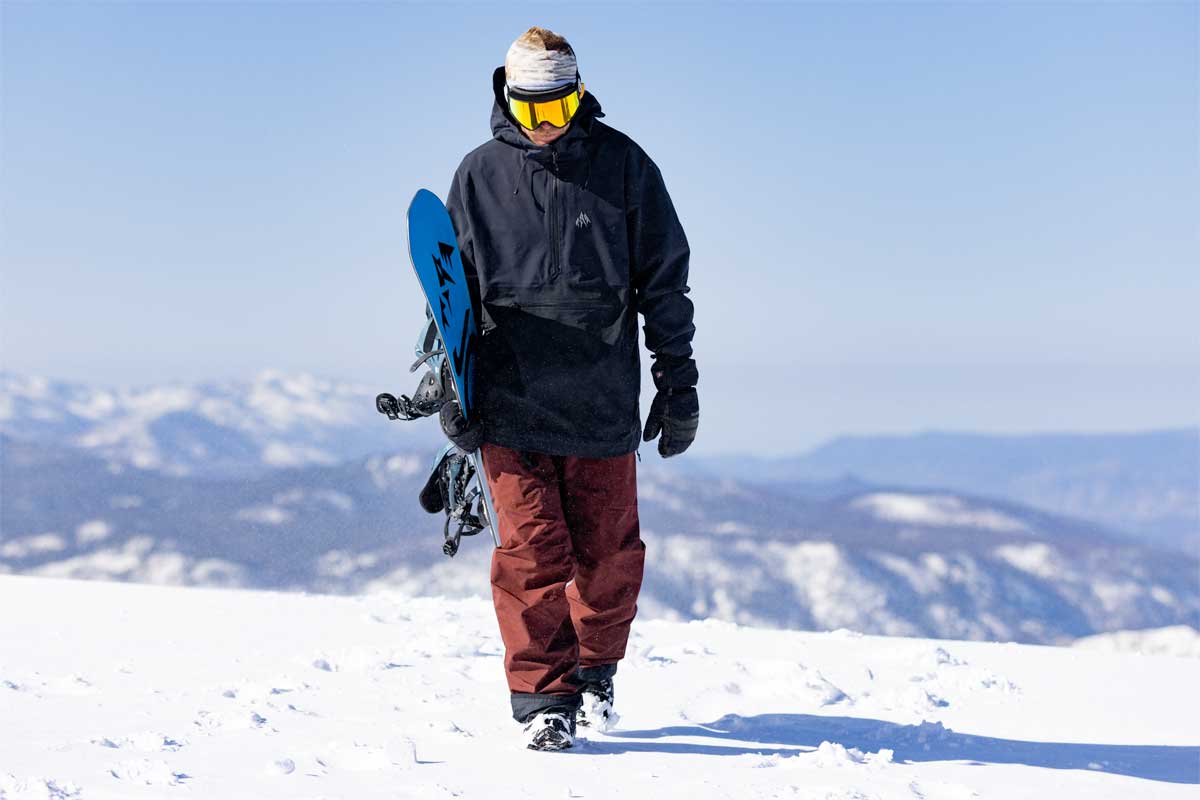
Men's Outerwear
Environmentally minded and movement focused technical gear built to embrace all of Mother Nature's moods.
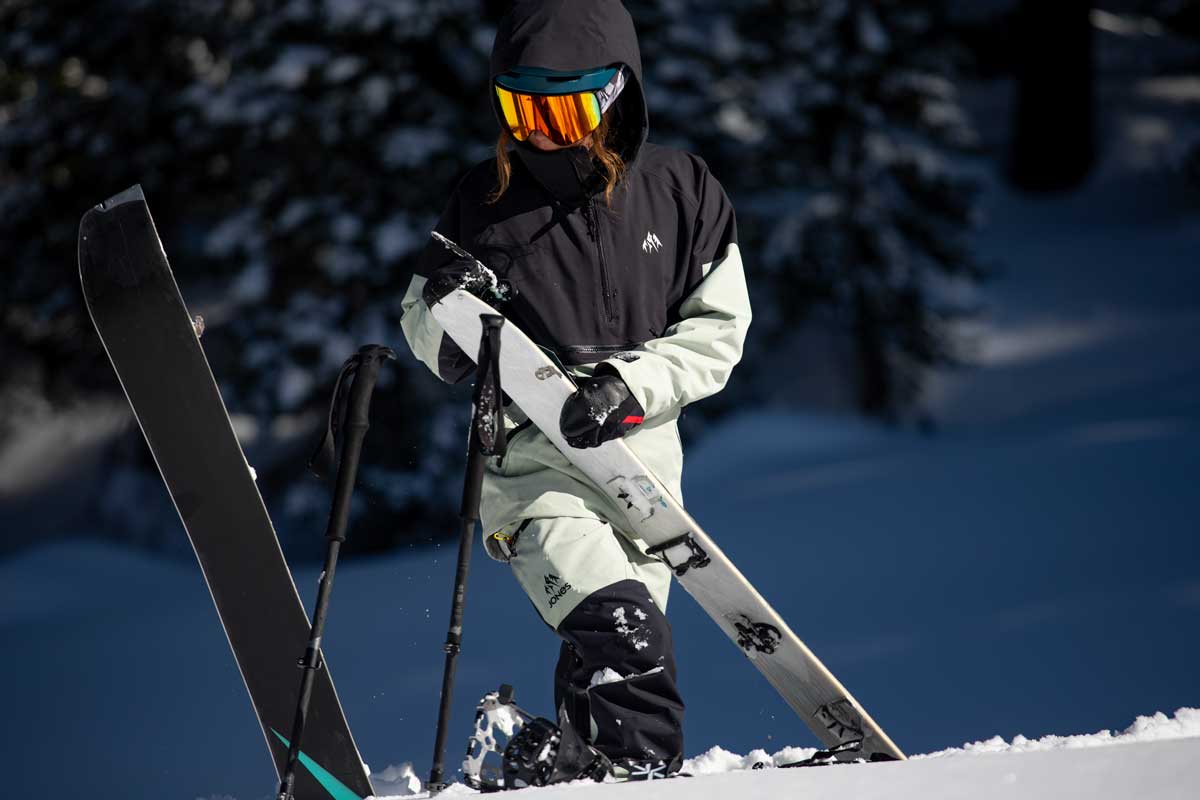
Women's Outerwear
Responsibly made, movement focused outerwear designed for women by women.

Men's Outerwear
Environmentally minded and movement focused technical gear built to embrace all of Mother Nature's moods.

Women's Outerwear
Responsibly made, movement focused outerwear designed for women by women.
